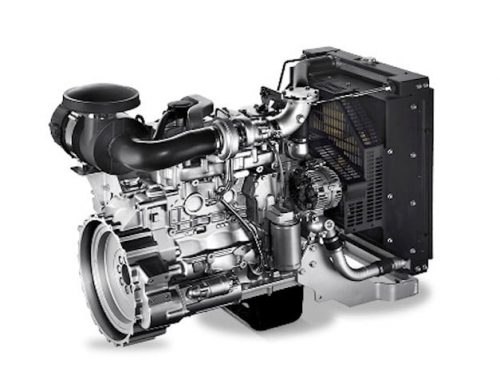Why do electricians get obsessed with sticking metal rods in the ground when setting up temporary power systems? How can the ground we stand on give rise to a risk of electric shock? Is it all a bit of brown stuff or an important tool in electrical safety? James Eade gets his spade out.
Many moons ago, when electricity was the new-fangled fascination setting fire to the homes of those rich enough to afford it, the learned gentlemen of the day put their minds to working out ways of protecting installations from the thermal effects of electricity as well as reducing the risk of electric shock.
Fast-forward a couple of years to 1882 and – perhaps unsurprisingly- these two fundamental principles of electrical safety formed the backbone of the first edition of the IET Wiring Regulations – then titled the ‘Rules and Regulations for the prevention of Fire Risks Arising from Electric Lighting’ issued by the IETs forerunner, the Society of Telegraph Engineers and of Electricians (it became the IEE in 1888, then the IET in 2006). They are still there in the 17th Edition and very unlikely to be removed in the foreseeable future; actually they keep getting added to, but I digress….
Protection against thermal effects proved relatively easy. If wires short together, or an appliance fails, it draws more current than in normal operation and so a fuse, or its modern equivalent, the circuit breaker, is used to protect against the overcurrent, thereby disconnecting the circuit automatically. Essentially a fuse is a thin bit of wire which is designed to get so hot at a specified current that it melts. It’s a bit agricultural as an engineering solution, but proved popular nonetheless and is still used today. In fact fuses can be more effective than circuit breakers in some cases – sometimes the simplest solutions are the best.
That still left the need to provide protection against the failure of insulation, giving rise to the risk of phase-phase, or ‘pole to pole’ in old language, shorts and subsequent risk of shock if the short circuit wasn’t low enough impedance to melt the fuse wire. To see how the brains of the time countered that, we need to look at the way those learned gentlemen decided to distribute the new-fangled invisible, odourless voodoo they named after a dried up grape – ‘current’.
Distribution
Originally there was no requirement to earth electrical systems and distributions would run effectively isolated from the mass of Earth. However, in the old days when insulation materials were not brilliant, degradation of the insulation between conductors wasn’t unusual. It was only detected when two phases shorted together, causing the corresponding fuses to, hopefully, operate. That didn’t always happen though, and sufficient current could flow and create enough heat to start a fire, or persist long enough for some unlucky person to get a shock between wires or the cable trays etc.
Someone decided that if you connect the ‘zero’ volt star point of the supply to earth, then connect a lamp between each phase and ground, it would show up an insulation failure.
Looking at Figure 1, (courtesy of Schneider Electric) if the insulation on a phase fails and a conductor makes contact with the general mass of Earth, the lamp will go out because Earth is effectively shorting the terminals of the bulb together. And so the first fault detection method using the mass of Earth came about, although we need to thank the French for inventing it. It is quite elegant in that most things are electrically connected to Earth via some means – structural steelwork in buildings, pipework connected to external buried metal pipes such as water pipes in the home or stages sitting on the ground at a festival – for example.
This method of detecting insulation failures existed well into the 20th Century, being used in mines particularly where safety is a big concern. The principle is still current, but the technology has evolved.
Earth return
As it is difficult to charge up the mass of earth, it is always taken to be zero volts and a useful reference. It also enables protection against electric shock to be quite effective as most connections with earth can be detected as a result – whether the connection is via a human or faulty insulation on a cable, for example.
Figure 2 (courtesy IET Guidebook on temporary power systems) shows the earth return path for faults. If a line conductor touches either the exposed-conductive-parts of an appliance, or indeed a human touches a line conductor, current will flow back to the source of supply via the mass of Earth. Originally, the protection was by fuses and latterly circuit breakers in the circuit itself, but these require quite a high current to flow down the ‘earth-fault loop’ in order to achieve quick disconnection. In other words, a low earth-fault loop impedance is required to achieve prompt disconnection; this is why one of the principle electrical tests conducted on temporary and permanent installations is the earth-fault loop impedance measurement (EFLI).
It doesn’t take much current to kill or cause serious tissue damage to a person or animal. It is the voltage, analogous to water pressure, that gives us the jolt, but the current, analogous to the volume of water, that causes burning and deep tissue damage. Static electricity can be in the region of 500,000 volts, an electric fence around 20,000 volts – both hurt but don’t kill us as the current is too low. Only around ten milliamps, ten-thousandths of an amp, of current is required to start giving rise to serious risk of tissue damage or cardiac or respiratory failure, whereas about eight amps will boil a kettle of water in a minute or two. You may have heard the expression “It’s volts that jolt and mills that kill” – the reference to ‘mills’ meaning milli-amps of current. Electricity is a very potent source of energy that needs to be guarded against.
As seen in the last instalment, RCDs are used to provide more sensitive protection. These devices measure the current flowing down the line and neutral conductors which – under normal operation – should be exactly the same. If some of the current leaks away via earth or some other path, the RCD will detect the imbalance and disconnect the circuit.
Not all circuits used to have RCDs and some still rely on fuses and circuit breakers. This may be acceptable if prompt disconnection times can be met to safeguard the user and the installation, and to help protect against the risk of shock we try and create a zone where everything is at the same potential. No potential difference = no risk of shock, and that is something that will be explored in a future article.
Finally
We like to reference our electrical distribution systems to earth to enable rapid fault detection and disconnection and that is why sticking metal rods in the ground can become something of an obsession. The better our connection with Earth, the more effective our protection measures. There are times when it may be possible to deploy electrical systems without the Earth reference, but suitable precautions need to be taken and it should always be done by someone competent, to understand the risks and mitigation measures. Being a qualified electrician doesn’t necessarily make you competent to understand such risks, hence why you need to ensure you employ competent electrical companies.
James Eade is a Chartered Engineer with over 20 years experience working in the event industry, including theatre, festivals, tours and corporate events. He advises several trade associations and represents the industry on various British Standard Committees, including those for BS 7671 and BS 7909. James is also the author of the guidebook on temporary power published by the Institute of Engineering Technology. For more information visit www.eade.uk.com










